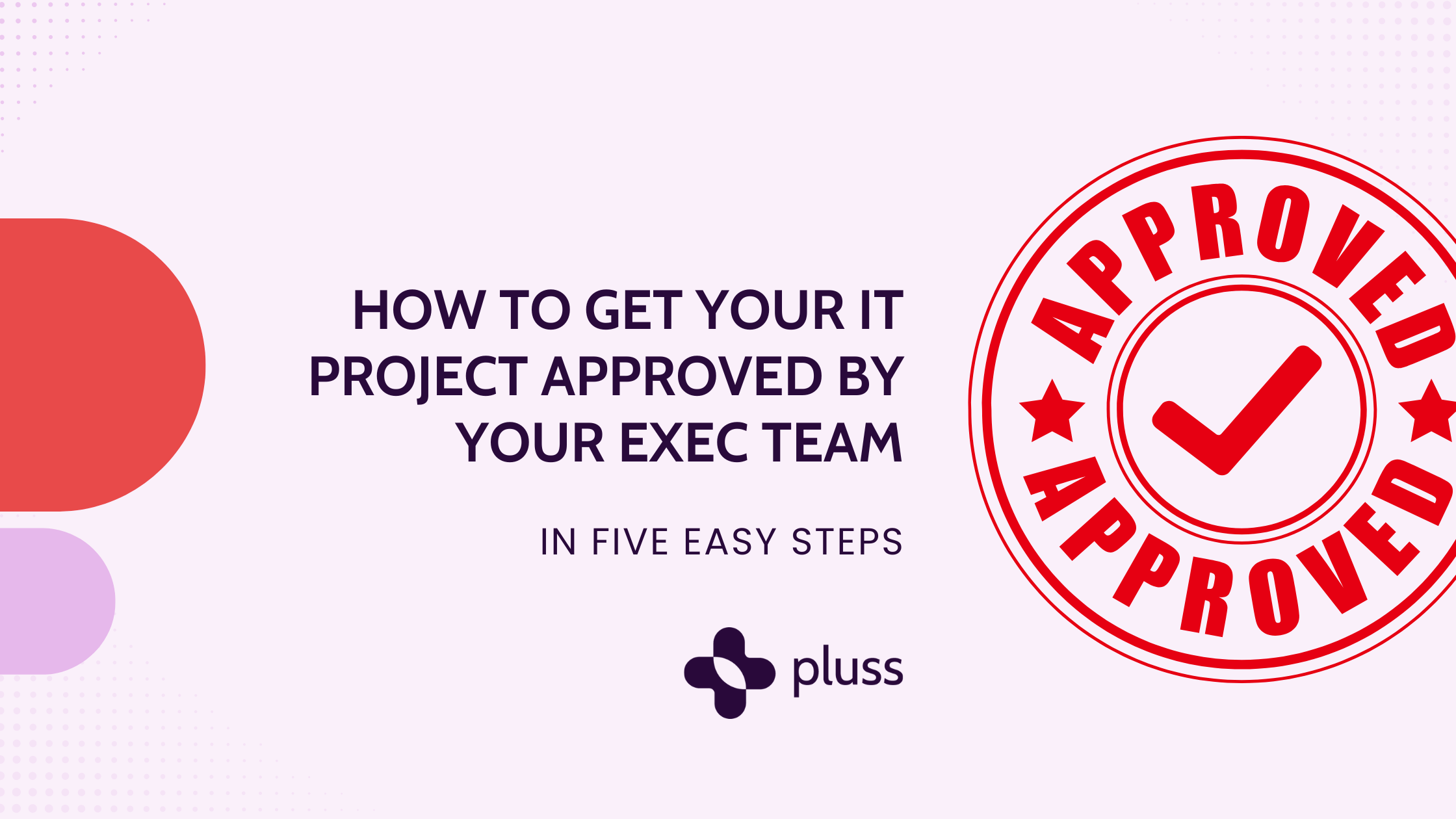How to get your IT project approved by your exec team in five easy steps
Are you struggling to get your IT project approved by your executive team? If so, you're not alone. In a large organisation, getting budget approval for your must-have IT project can be a really difficult task. Many service delivery managers, corporate managers, and execs can find it challenging to get their projects through the capital expenditure budgeting gauntlet that is a common path for the first half of each year. There is only so much capital available for IT projects, and the organisation can only handle so many large change management projects at any one time. Just because you think your project is the most important doesn’t mean it stacks up as a priority for the rest of the exec team, but there are steps you can take to improve your chances of success. In this guide, we'll show you how to get your IT project approved by your exec team in five easy steps.
Step 1: Identify the problem you're solving
Before you can get your exec team to sign off on your project, you need to clearly identify the problem you're solving. This means understanding the pain points in your organisation and how your project will address them. Take the time to research and analise the issue thoroughly, gathering data and input from key stakeholders. If you can’t clearly identify the problem as being critical for the organisation or business unit, then you will struggle to get approval. If the problem is critical to the business, then you are ready to develop a clear and concise problem statement that outlines the issue and how your project will solve it. This will help you build a strong case for your project and demonstrate its value to your exec team.
Step 2: Develop a business case
Once you've identified the problem, you need to develop a business case that outlines the benefits of your project. This should include a cost-benefit analysis, outlining the costs of the project and the expected benefits to the organisation. Use data and metrics to support your business case and demonstrate the ROI of your project. In the case of demonstrating ROI for a community communication app, you might find this article helpful: How to deliver return on investment in your community app. Consider the impact of your project on the organisation's bottom line, as well as on other key performance indicators (KPIs) such as productivity, efficiency, and customer satisfaction. By developing a strong business case, you can make a convincing argument to your exec team that your project is worth investing in.
Step 3: Create a project plan
With your problem statement and business case in hand, it's time to create a project plan. This should outline the scope of the project, the timeline, and the resources required to complete it. Be sure to identify any potential risks or roadblocks that may arise during the project, and develop strategies to mitigate them. Your project plan should include clear milestones and deadlines to keep the project on track and should be regularly reviewed and updated as needed. By having a detailed project plan, you can demonstrate to your exec team that you have thought through all aspects of the project and are prepared to execute it successfully.
Step 4: Get buy-in from stakeholders
Before presenting your project to your exec team, you need to get buy-in from stakeholders across the organisation. This includes IT staff, business leaders, and end-users who will be impacted by the project. The larger the project, the more stakeholder engagement you need to do. If you are not an executive yourself, make sure you have buy-in and sponsorship from one of the exec team. They will be advocating on the project’s behalf after you have completed your presentation. The exec sponsor will need to push the case for the project as a priority amongst others when hard decisions are being made by the team of how to allocate capital. If you don’t have their genuine support, then your project will never make the cut. Dig deep into the feedback from stakeholders. Address concerns and keep refining until you have a plan that genuinely has their endorsement. By involving stakeholders in the project from the outset, you can build support and momentum for your project, and increase the chances of it being approved by your exec team.
Step 5: Present your project to your exec team
With your problem statement, business case, project plan, and stakeholder feedback in hand, it's time to present your project to your exec team. Make sure you have your exec sponsor in the meeting, and if possible, give them a chance to introduce you and the project and why it’s a critical project for the organisation. Be prepared to answer any questions they may have and address any concerns they may raise. Use your business case to demonstrate the value of your project and highlight the benefits it will bring to the organisation. Be sure to emphasise the impact of your project on the organisation's strategic goals and objectives, and how it aligns with the overall vision and mission of the company. By presenting your project with confidence and enthusiasm, you can increase the likelihood of it being approved by your exec team.
By following these five easy steps, you can improve your chances of getting your IT project approved by your exec team. Remember to clearly identify the problem you're solving, develop a strong business case, create a detailed project plan, get buy-in from stakeholders, and present your project with confidence. Good luck!

